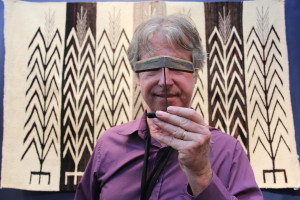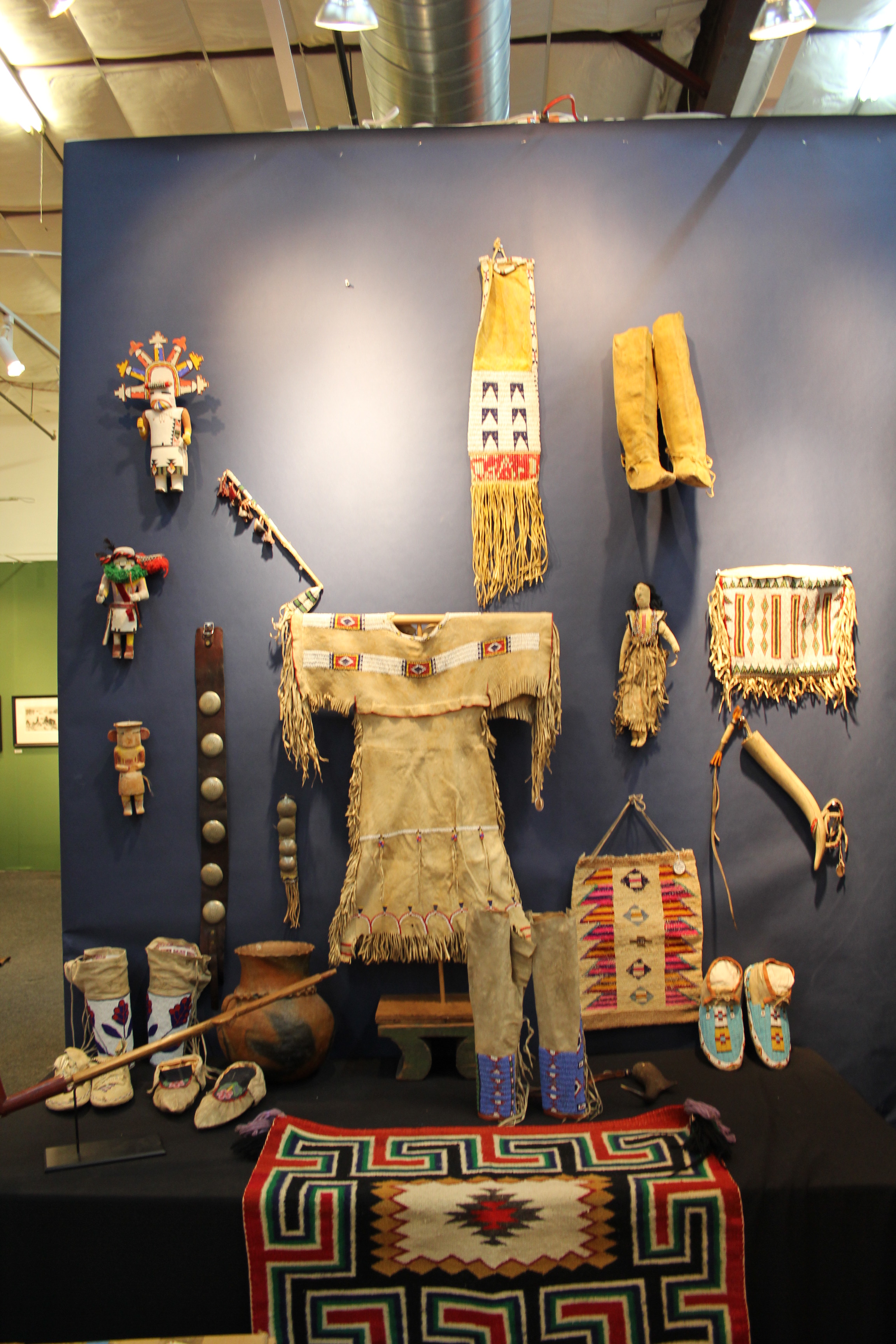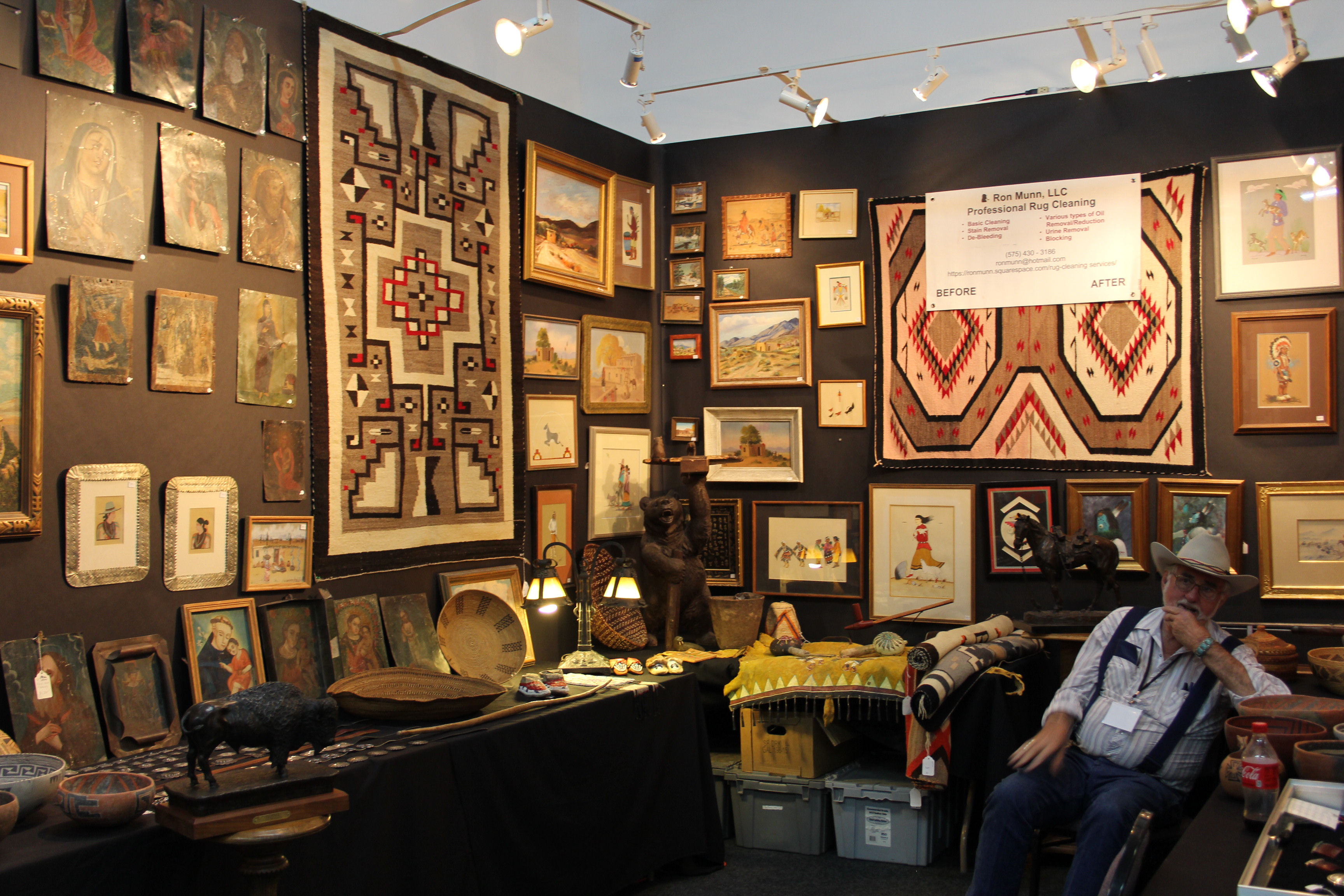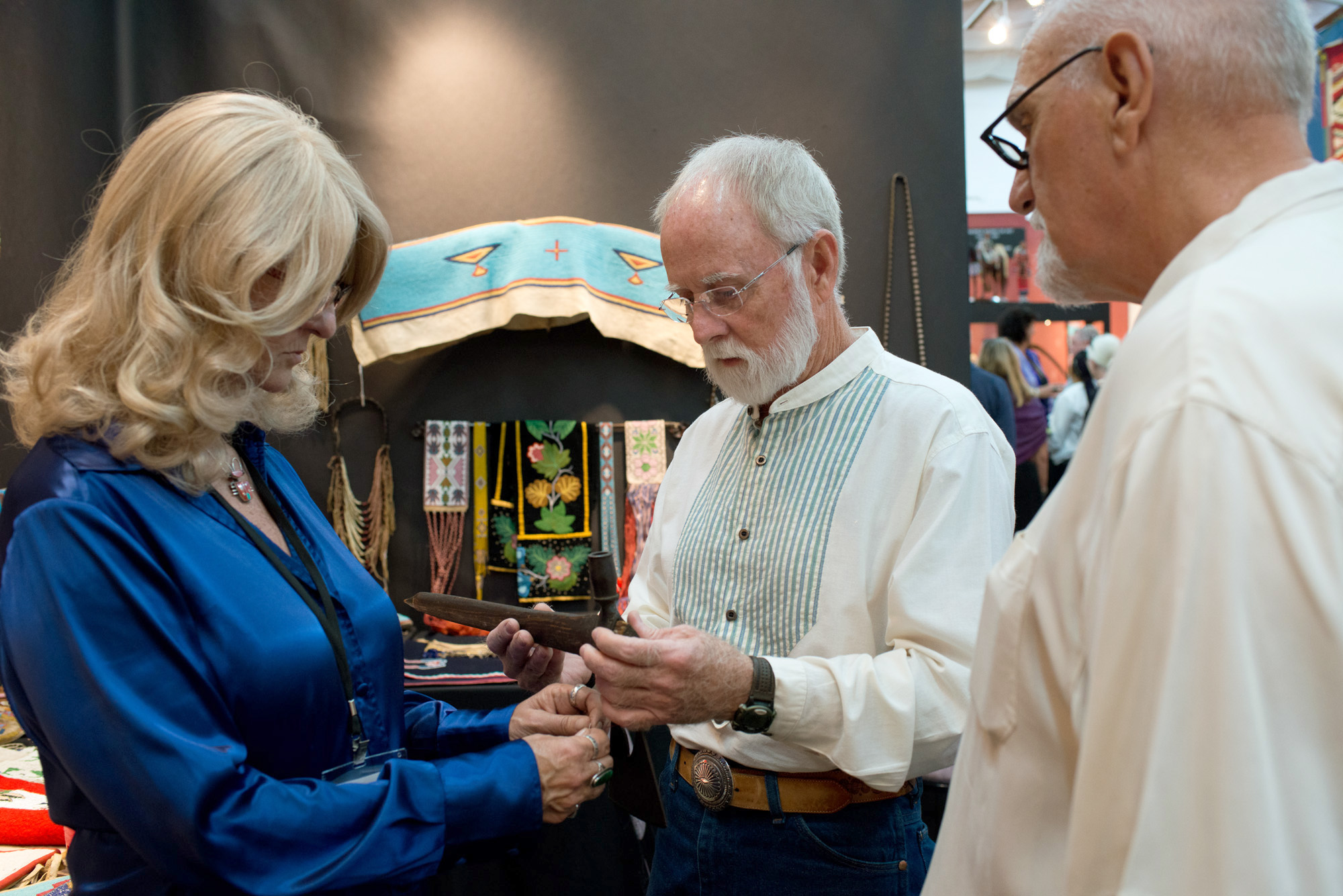Review and Photos by Laura Beach
SANTA FE, N.M. — As Kim Martindale and John Morris see it, opportunities for creative collaboration are growing even as the world is getting smaller. Coming off Objects of Art and the Antique American Indian Art Show, the two August events in Santa Fe they own and produce together, the Los Angeles-area promoters are looking forward to an even busier 2017. January brings the LA Art Show, Martindale’s joint venture with the Palm Beach Show Group. In April, Martindale and Morris unveil their new Objects of Art Los Angeles. Having acquired the San Francisco Tribal & Textile Art Show from Caskey-Lees, Martindale, whose American Indian Art Show in Marin is turning 33, has linked the two Northern California fairs and is working with Morris to create a San Francisco Tribal Art Week in February.
Martindale and Morris recently returned from separate but overlapping trips to London and Paris, where they took in the ethnographic art fairs Parcours des Mondes and Tribal Art London. “We enjoy working together. We even managed to share a small hotel room in Paris,” explained Morris, who produced and promoted rock concerts for much of his career and now divides his time between Malibu and Santa Fe.
In Santa Fe, the duo aims to build the leading show of antique American Indian art, a project that requires bringing the best dealers together and forging alliances with entities like the Southwestern Association for Indian Arts. SWAIA, as it is called, organizes the 95-year-old Indian Market, the largest juried show of contemporary Native art in all media. The success of Indian Market, which reportedly enjoys 80,000 visitors annually, has led other promoters and several auctioneers to organize shows and sales of their own. The city’s many museums and galleries tempt seasonal visitors with related exhibits and events. In short, Santa Fe in August is a must for anyone interested in Native American art.
The Antique American Indian Art Fair opened with a preview benefiting New Mexico PBS on Tuesday, August 16, and closed on Friday, August 19, just as Indian Market was getting underway. Martindale and Morris say their attendance reached 3,500 this year, up ten percent from 2015.
Relaxed and friendly, the presentation sets up in two rooms on one floor. Only a handful of the fair’s 70-some exhibitors are in the second room, which also houses themed exhibitions, a lecture space, café and office.
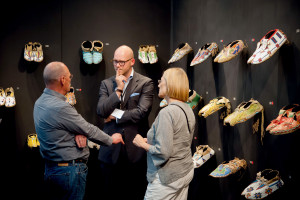
H. Malcolm Grimmer Gallery presented dozens of Nineteenth Century Plains Indian beaded moccasins in a curated display.
The promoters launched the Antique American Indian Art Show three years ago after specialists told them they wanted an event limited to pre-1950 American Indian art of the highest quality. Some of the biggest names in the business participate, offering a broad selection of jewelry, pottery, textiles, baskets, beadwork and carving. The fair leans to Navajo, Hopi, Pueblo and Plains material, but Eastern Woodlands and Northwest Coast objects are also popular.
Longtime Santa Fe dealer H. Malcolm Grimmer mounted a tour de force display of Plains Indian moccasins. Grimmer spent more than a decade collecting the beaded examples dating from the mid- to late Nineteenth Century. The color catalog The Path to Beauty: The Art of Plains Indian Moccasins accompanied Grimmer’s presentation. Of the several dozen pairs of shoes offered, a half-dozen were marked sold on opening night.
Santa Fe mainstays Morningstar Gallery and Economos Works of Art/Hampton Gallery arrayed powerhouse examples of early Pueblo pottery, Navajo weaving, Plains beadwork and Spanish Colonial pine furniture. Two massive Santo Domingo jars dated to 1860 and 1870.
Chilkat blankets — offered by Taylor Dale, Brant Mackley, and Irwin and Marjorie Goodman, among others- attracted notice, as did Navajo chief’s blankets. As Santa Fe dealer Christopher Selser explained of the latter, “When people get interested in the Classic Period, this is what they want. It’s a synthesis of the simple Pueblo striped manta and the Navajo serape.” Cochineal and indigo dyes, plus undyed sheep’s wool, accounted for the distinctive blue, red, black and white palette of Selser’s Nineteenth Century weaving.
John Krena of Four Winds Gallery in Pittsburgh and John C. Hill of Scottsdale, Ariz., showed an impressive range of Native arts, accenting the historic to contemporary mix with Nakashima furniture. A rare Curtis goldtone photograph, Navajo silver flatware and Modernist jewelry by Kenneth Begay joined carved stone sculpture by the well-known Chiricahua Apache artist Bob Haozous.

Native American cradleboards and a Spanish New Mexican colcha embroidery at Trotta-Bono, Shrub Oak, N.Y.
Krena sold a rare pair of silver bookends with multistone inlay by Teddy Weahkee, and did well with jewelry. Hill said he had a great show, selling primarily high-end pieces.
Joined by their adult children, New York dealers Ted Trotta and Anna Bono were redoing their booth after selling most of what had been on their back wall. Their varied offerings ranged from a group of Indian cradleboards and a Spanish New Mexican colcha embroidery to a circa 1830-40 Lakota Sioux woman’s hide robe painted with the abstract representation of an animal’s insides.
“The most exciting thing I have are these Iroquois moccasins dating to about 1710,” said New York dealer John Molloy. His embroidered hide footwear resembles moccasins worn by the four “Indian Kings” painted by Jan Verelst in 1710. The moccasins surfaced in an antiques mall, where they were described as Nineteenth Century Apache.
“The seller was off by a couple of hundred years and a couple thousand miles,” said Molloy, who, like several of his colleagues, set up at Albuquerque’s Great Southwestern Antique Show August 5-7, before arriving in Santa Fe.
“I brought my strongest material ever,” said Barry Walsh of Buffalo Barry’s Indian Art. A Hopi specialist, the Holden, Mass., dealer filled his cases with kachinas, the earliest of which dated to 1890. Of note was a trio of figures by Wilson Tawaquaptewa.
The most vivid display belonged to Martindale and Philip Garaway, Venice, Calif., dealers in American Indian art who stopped shoppers in their tracks with eye-popping Germantown Sunday saddle blankets in crimson red. Topped with California and Arizona baskets, their cases contained Navajo, Hopi and Pueblo jewelry.
“I started in Navajo textiles and eventually moved into California plein air and Western paintings,” Garaway, who spent his teen years on the Navajo Reservation in Arizona, explained.
Two special exhibits deserve mention. Experts Mark and Linda Winter, who run the Historic Toadlena Trading Post in Newcomb, N.M., explored the history of Navajo weaving from Toadlena and Two Grey Hills. Bold, geometric patterns; tight weave; and natural, earth-toned palettes characterize wool rugs from these areas.

Mark and Linda Winter organized the special exhibit “Woven in Beauty: 100 Years of Navajo Master Weavers from the Toadlena/Two Grey Hills Region.”
Jose Bedia, Jr, and James Trotta-Bono curated the selling exhibition “On The Frontier,” spotlighting contemporary paintings and sculpture by Cuban American artist Jose Bedia, Sr, whose dramatic, large-scale work shares an affinity with Native art.
“Compared to the contemporary art world, the tribal art world is still small,” said Martindale. Small, perhaps, but thanks to Martindale and Morris, increasingly well positioned to attract new collectors the world over.
“There is more interest in art than ever before. The key is to bring tribal, ethnographic and Indian material to people who have not yet discovered it,” said Martindale.
For additional information, www.antiqueindianartshow.com or 310-822-9145.



